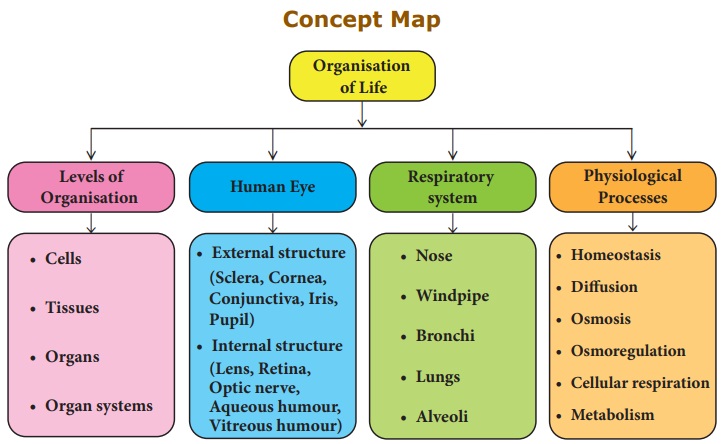Chapter 18 | 8th Science - Organisation of Life | 8th Science : Chapter 18 : Organisation of Life
Chapter: 8th Science : Chapter 18 : Organisation of Life
Organisation of Life
UNIT 18
ORGANISATION OF LIFE

Learning Objectives
After the completion
of this lesson, students will be able to:‹‹
* understand the
different levels of organization seen in the animal world.
* know about the
structure of cells.
* understand the types
of tissues.
* know about the
structure of eye as an example for organ level of organization.
*understand the
respiratory system as an example for system level of organization.
* understand the physiological
functions of organizational setup with reference to homeostasis, diffusion,
osmosis, osmoregulation, cellular respiration and metabolism.

Introduction
If you look around your sorrounding,
you will be able to observe numerous varities of animals. There are animals
like amoeba which cannot be seen by
our naked eye. There are also animals like elephants and blue whale which are
of huge size. The variations in animal are not only seen in size but also in
the complexity of the cells, tissues and the body structure.
Based on the structural
organization, organisms can be classified into prokaryotes and eukaryotes. In
some organisms like bacteria, cyanobacteria and mycoplasma, the true nucleus is
absent. These organisms are called prokaryotes. However, organisms like plants
and animals have cells with a well-defined nucleus covered by membrane. These
organisms are called eukaryotes. Some organisms have a single cell body and
they are called as unicellular organisms.
Eg. Yeasts and amoeba. Organisms such
as plants, animals and human beings are made of a large number of cells and
they are called multicellular organisms.
In this lesson, let us learn about different levels of organizations of living
organism with suitable example.
Related Topics